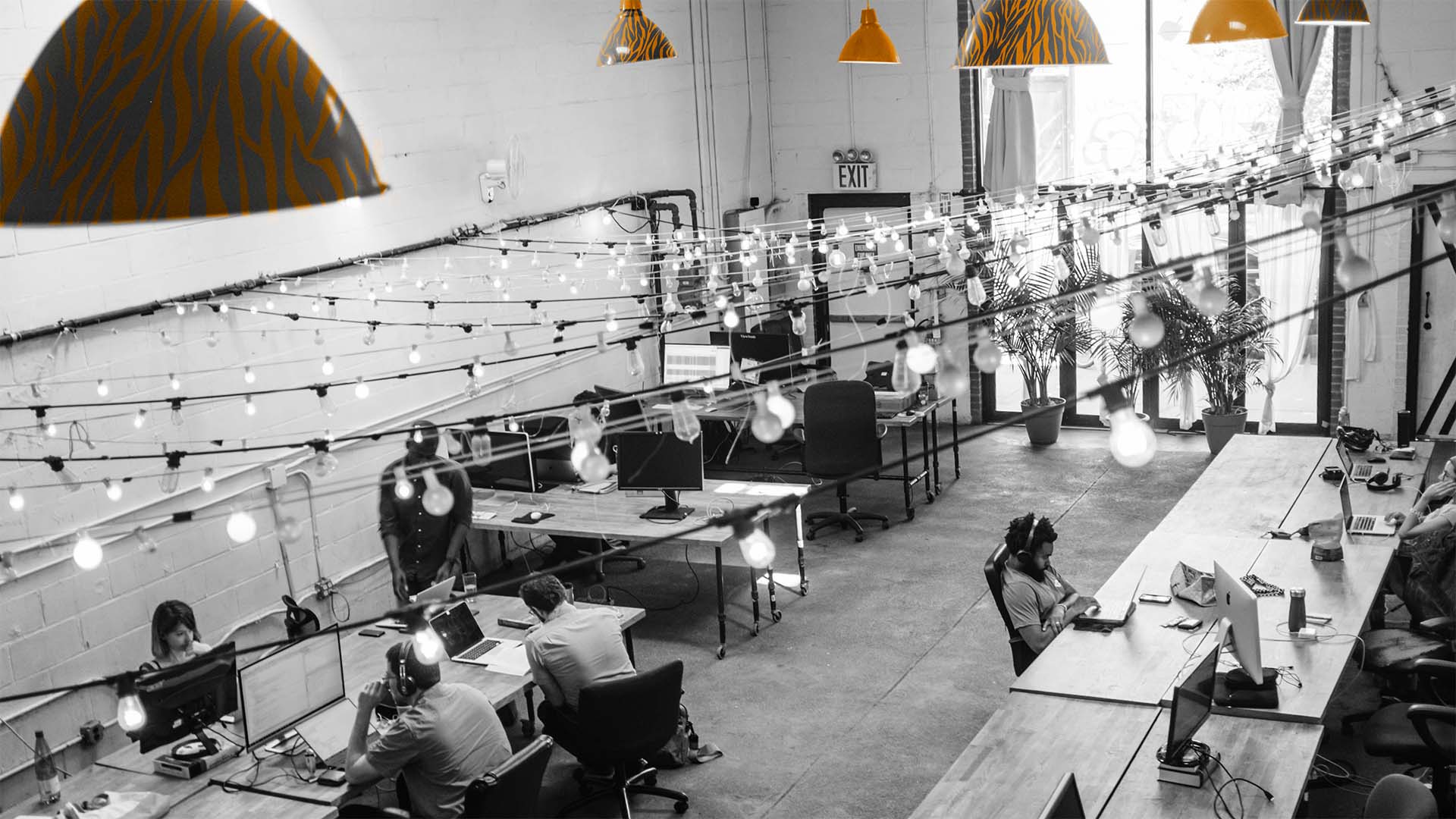So much has happened since the world locked down, the dream of remote work on a regular basis has become the norm for many, and tech has advanced at such a pace to feed this shift.
By delving into developing trends, leaders in the workplace can equip themselves for what lies ahead, proactively tackle significant industry changes, and construct an improved workplace environment that benefits everyone.
Presently, workplaces worldwide are witnessing the emergence of new trends, including our own. Unlike in recent years, these trends are not driven by necessity, urgency, or innovation. In 2023, people and companies are seeking to enhance their operations and lifestyles by working more efficiently and enjoying a better work-life balance.
As workplace leaders, we can benefit from exploring these trends to prepare for the future, stay ahead of significant industry changes, and foster a better workplace for all.
Let’s examine four current trends that are shaping the future of the workplace.
The workplace vs. the home office
Whether your company is operating in a hybrid or fully in-office mode, it is now competing with the home office. With employees having worked remotely for months (or even years), they are now transitioning back to the traditional workplace.
According to most employees, the workplace remains crucial for collaborating and building relationships. Therefore, many employees will only come to the workplace for specific purposes. In a recent survey, we discovered that 93% of respondents are planning their workdays according to their preferences, reserving specific tasks for office days. Additionally, more than one-third (36%) of respondents prefer to reserve priority meetings and collaborative work for days when they are on-site.
In order to remain competitive with the home office, workplace leaders must design experiences and work environments that attract employees. This could entail creating meeting spaces that facilitate collaboration and in-person meetings. Additionally, workplace leaders could organise social events such as happy hours, team lunches, and monthly birthday celebrations to enable people to enjoy the social benefits of being in the office. It is imperative to think of ways to make the on-site experience more appealing than the convenience of working from home.
Workplace design
The new trend of thoughtful, optimised, and creative workplace design falls under the broad umbrella of “the workplace vs. the home office.” Workplace design plays a crucial role in motivating employees to work from the office. It is not limited to simply adding paint colours and plants to the office.
Workplace design encompasses all aspects of setting up a successful workplace, such as office layout, furniture, technology, environment, and even plants.
A recent survey of 800 workplace leaders was conducted to understand how they are encouraging employees to return to the workplace. It found that many have implemented changes to their workplace design. Among the respondents, 39% have redesigned their office environment to include music, social spaces, and games. Additionally, 40% are promoting their office amenities, such as standing desks, quiet working pods, and other features that employees may not have access to at home.
While workplace design is not a new trend, it is gaining renewed focus recently due to an emphasis on four distinct types of spaces:
- The first type of space is focused individual work areas, which are essentially individual workstations designed for employees to work independently. These workstations typically include a desk with a monitor and other amenities necessary for an employee to work effectively. Even in open-plan offices, employees consider these designated spaces as quiet and focused areas, suitable for uninterrupted work. These spaces are ideal for heads-down work but may not be suitable for loud virtual meetings.
- The second type of space is open individual work areas, which are zones that are more open to noise and socialising. These areas are typically communal spaces where employees can plug in their technology, grab a coffee or snack, and interact with their colleagues. These spaces are designed to foster a sense of community and facilitate casual conversations among employees. While they are not entirely quiet, they are still suitable for individual work that does not require complete silence.
- The third type of space is focused collaborative work areas, which are typically closed-off conference rooms and meeting spaces designed for team collaboration. These spaces are ideal for conducting focused sessions, taking virtual calls with remote colleagues, or discussing confidential matters. They provide a safe and private space for teams to collaborate and work together without distractions.
- The fourth type of space is open collaborative work areas, which are modular and flexible in nature. These areas typically feature chairs, couches, and bean bags that can be moved around to create different configurations. They may also have whiteboards or monitors on wheels to facilitate collaboration. These spaces encourage spontaneous creativity and are ideal for group brainstorming sessions, problem-solving, and other forms of in-person collaboration. They provide a flexible and dynamic environment where employees can work together in a comfortable and informal setting.
Ultimately, employees have different work styles and preferences, and it’s important to offer them a variety of options for how they approach their work and social habits throughout the day. Providing customisation and convenience is key to creating a positive workplace experience for your employees. By offering a range of different spaces that cater to different types of work and collaboration, you can create an environment that meets the needs of all your employees and helps them to be more productive, engaged, and satisfied with their work.
Childcare in the workplace
Child day care is emerging as a significant factor driving the next modern workplace trend. Having childcare facilities at the workplace is a crucial incentive for parents to prefer working from the office instead of working from home. It has been noted that “childcare is undergoing a renaissance and should be a critical component of a company’s recruitment and retention strategy. Forward-thinking employers are recognising that the more appealing they make their job site, the more employees will want to come to the office and build a strong work culture.”
Providing childcare in the workplace can have significant benefits for companies. Although it may seem expensive at first, it can actually improve morale, reduce absenteeism, and lower attrition rates among employees who are working parents. Additionally, workplace-provided childcare can help promote equity in the workplace. The demand for childcare in the workplace is greater now than ever, particularly among working mothers.
Providing childcare in the workplace can also lead to increased productivity and employee loyalty, which can ultimately benefit the bottom line. In addition to the cost savings mentioned, offering workplace childcare can also be a powerful recruiting tool and help attract top talent who prioritise work-life balance. It’s worth considering the long-term benefits and return on investment when evaluating whether to offer this perk to employees.
Productivity monitoring
It’s important to note that while monitoring workplace productivity is becoming increasingly popular, it also raises concerns about employee privacy and autonomy. Employers should be transparent with their employees about what is being monitored and why and ensure that any monitoring practices are within legal and ethical boundaries. Additionally, it’s important to consider other factors that may affect productivity, such as workload and work-life balance, and not rely solely on monitoring technology to measure employee performance. Ultimately, a balance must be struck between monitoring productivity and respecting employee rights and well-being.
The emphasis is not solely on productivity but also on measuring engagement to better comprehend the employee experience in the workplace. This new technology enables employers to identify patterns of overwork to prevent burnout. However, implementing this trend requires caution to avoid losing employees’ trust and creating a harmful work environment. Effective communication is essential, and Gartner recommends customising communication to roles, considering geographic variations, and utilising individual managers for successful implementation.
What’s next?
Depending on your industry, location, and company demographics, each workplace will have unique needs and preferences. For instance, if you’re hiring a lot of Gen Z employees, prioritising in-person work experiences might be crucial. Alternatively, if you have a significant number of working parents on staff, exploring options for workplace childcare could be a wise move.
Regardless of your industry or location, your workplace is now in a permanent competition with the comfort and convenience of home offices. It’s crucial to find innovative ways to engage and increase productivity of employees in the workplace. You can use the four modern workplace trends mentioned as a starting point to stay ahead of the curve. Embracing these focus areas provides an excellent opportunity for your company to stand out as a top employer.

